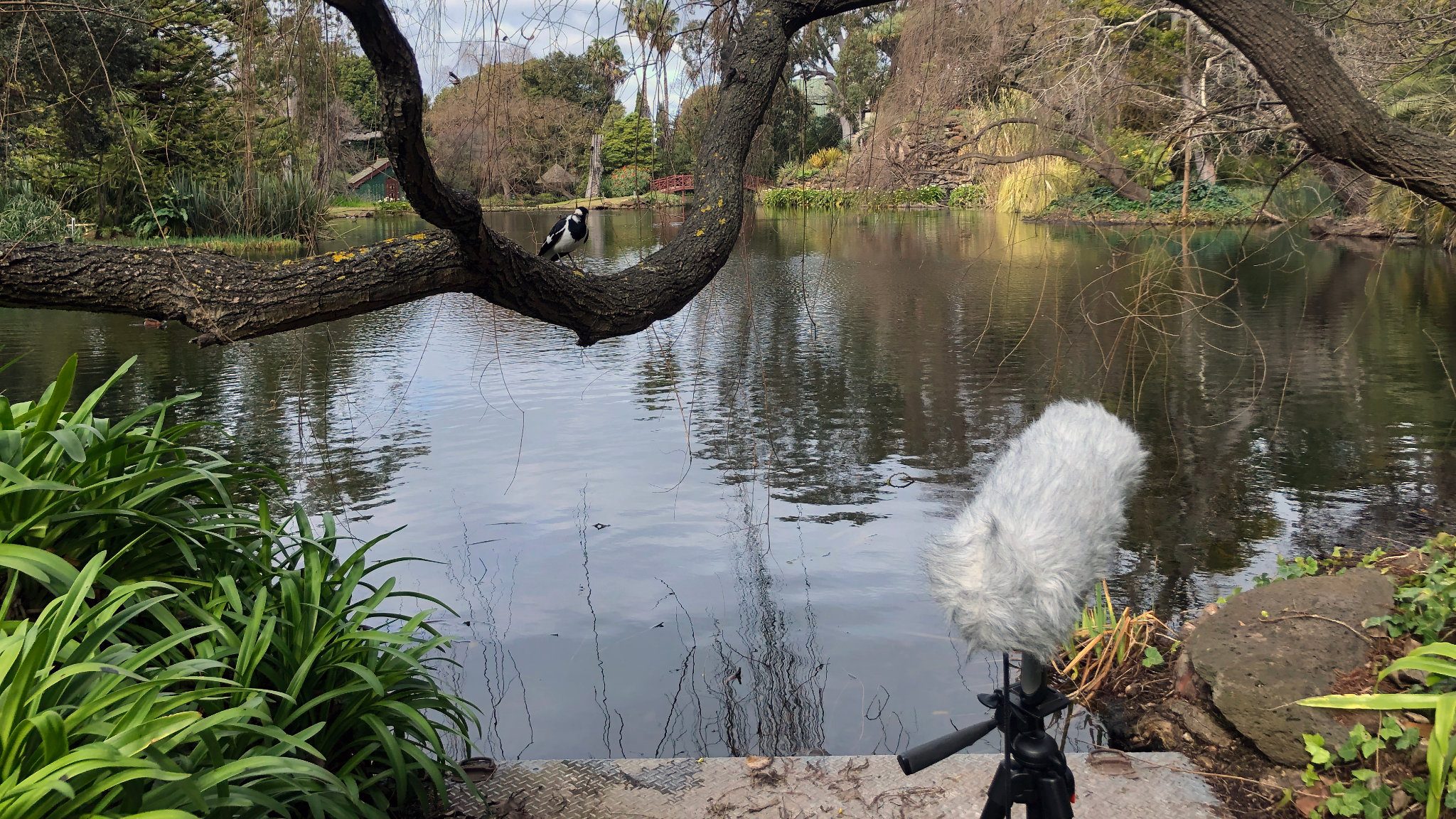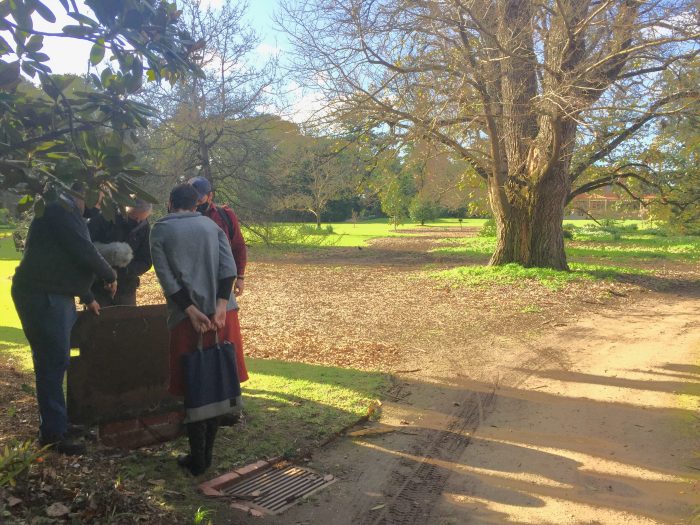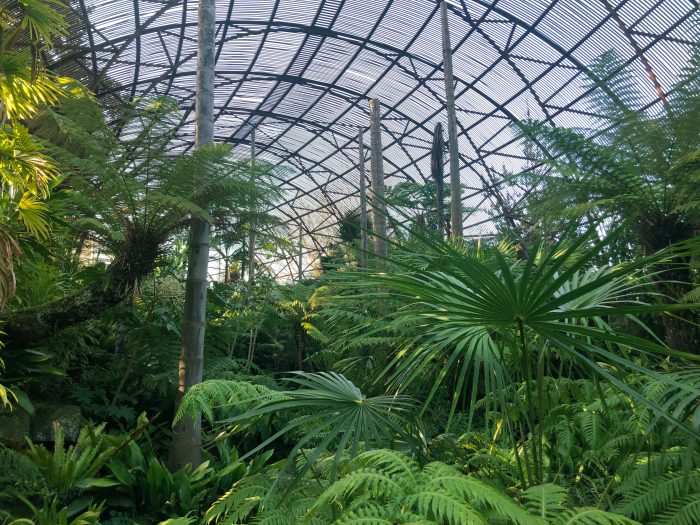
Listening Reveals More Than You See
Sound is a useful and revealing companion to a world made familiar through vision. Rippon Lea is visually stunning. It is hard to take a bad picture of its colourful gardens and ornamental lake setting. It is a picturesque environment for visits and especially for the framing of special occasions.
Birds appear to love Rippon Lea as much as humans do. The garden is peppered with the varied calls of many species – some regionally quite rare – that have made Rippon Lea a home, one that offers protection from larger aggressive birds.
If we listen carefully, we hear their activity layered across the gardens. Thornbills and scrubwrens flit about the dense exotic understory. Grey teal ducks and swampy moorhens call and splash on the lake. Silvereyes, pardalotes and even golden whistlers chatter as they hunt for insects in the fernery. Overhead, ravens, currawongs and magpies call from the canopy while rainbow lorikeets, wattlebirds and cockatoos dart noisily across the sky.
The Lake
The garden
The garden is also swathed in the sounds of human activity. We might hear the excited voices of children exploring, gardeners using their tools, and traffic and trains passing close-by. Further away, a light plane drones across the sky while sounds of buzz saws and bobcats drift in from the surrounding suburbs. These sounds mark the many human energies and forces that envelop the visitor, contributing to a sonic framing of the garden experience. We hear and feel these sounds as forces on our bodies, and it is likely that these same forces are also felt by the garden’s non-human cohabitants.
With the aid of special microphones, we can listen more deeply within the garden environment to the many subtle sounds that are sometimes hidden from view. Hydrophones can listen under the lake to the clicks and whirrings of small aquatic creatures active beneath the surface. These sounds reveal a different regime of signalling within a subterranean environment that sound artist David Dunn referred to as ‘the emergent mind of the pond’.
Hydrophone
Subterranean recordings
Under the lake and deep within the garden beds, specialist geophones record low rumblings each time a train passes over the metal tracks next to the garden’s boundary. These vibrations are just one example of how human forces invisibly but audibly propagate throughout the garden.
Specialist binaural microphones – that can mimic human listening perspectives – are used to capture the quiet rustling (psithurism) of trees caused by wind, and the delicate movements and utterances of small animals, birds and insects.
Carefully placed microphones reveal water flowing under the surrounding suburbs towards Rippon Lea from an ancient spring located in what is now Caulfield Park. These subterranean resonances evocatively describe the hidden network of chambers and pipes that channel water into Rippon Lea’s own system of pipes buried within the garden.



Sound design for augmented reality experiences
The Hidden Rippon Lea app presents an archive of sounds specific to three Rippon Lea listening sites: the lake, the windmill and the fernery. It incorporates recordings that I have made, plus subterranean recordings made by Taylor Coyne.
The app project team decided to divide the landscape into five horizontal layers that the user can view through the phone as though lining up a shot. The five layers: sky, canopy, understory, ground and the subterranean are selected by tilting the phone. In doing so, the app becomes an acoustic lens that focuses the listener on familiar and hidden sounds that originate within each layer.
Sound always expands outwards from its source and will often be audible well beyond an individual app layer. Unlike vision, we can’t turn away from traffic sounds or other disturbing sounds we don’t wish to hear, nor do we have earlids to block them out! Instead, we subconsciously suppress sounds that we don’t want to listen to.
Carefully implemented by the team’s VR designer Oscar Raby Piccardo, the app soundscape presents novel juxtapositions of different sounds gathered from each of the three sites and arranged outside their usual listening contexts. When revealed in this way, sounds that we might normally wish to ignore and suppress can become fascinating. There is the possibility that listening via the app can reveal new relationships between sounds and their sources and causes. At the windmill site you might hear weather sounds in one layer merging with metallic sounds of the working windmill in the adjacent layer. You might hear the elemental forces of wind and rain that drive the windmill’s pump, that was once crucial to the irrigation system that sustains all that we see, hear and smell in the garden.
Encountering mechanical sounds
Using the app, we might also encounter mechanical sounds driven by the human desire for comfort and aesthetic pleasure: air conditioning (audible at the fernery site); the garden’s extensive sprinkler system; lawn mowing; and the pruning and mulching of old and unwieldy plants.

Importantly, each user navigates the archive of sounds in their own way as they gently tilt their phone cameras to traverse the visual layers. In doing so, no two listening experiences will be alike.
Finally, it should be noted that some sounds occur only in a particular season or at a certain time of the day. For example, daily at dawn, a street cleaning truck with its loud suction mechanism and warning beeps makes several passes along the streets bordering Rippon Lea in order to remove leaves, twigs and rotting figs that have fallen across the garden’s fence onto the suburban roadway. This early morning activity sonically marks the ongoing maintenance of a boundary between two spatial orders – the garden and the urban streetscape. There is a perceived need for the detritus spilling over and blurring this boundary to be cleaned up. However, this very noisy upkeep of visual and spatial order is achieved at a cost to the integrity of the daily dawn chorus, through which non-human framings of territory are also being expressed.
Through the app, it is hoped that we might consider how the everyday world, that we sometimes take for granted, is sonically rich and interconnected in myriad ways, and that if we make the time to listen, sound has much to tell us about these connections. The Hidden Rippon Lea app really comes alive when it is used by visitors, as a listening lens to search, discover and to think, as we contemplate the garden.
Credits
Dr David Chesworth
Vice-Chancellor’s Postdoctoral Fellow
School of Art, RMIT University
with assistance from
Sonia Leber
Senior Industry Fellow
School of Art, RMIT University
Discover Rippon Lea.
See what hides beneath



 Rippon Lea House and Gardens
Rippon Lea House and Gardens